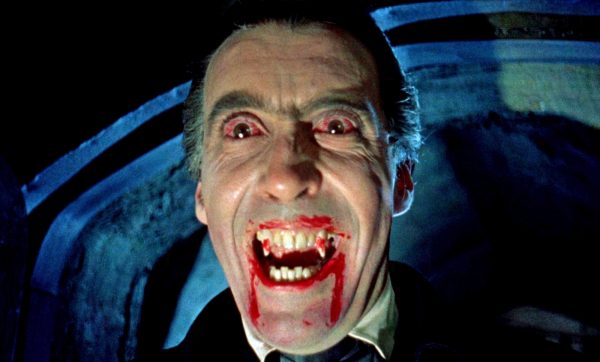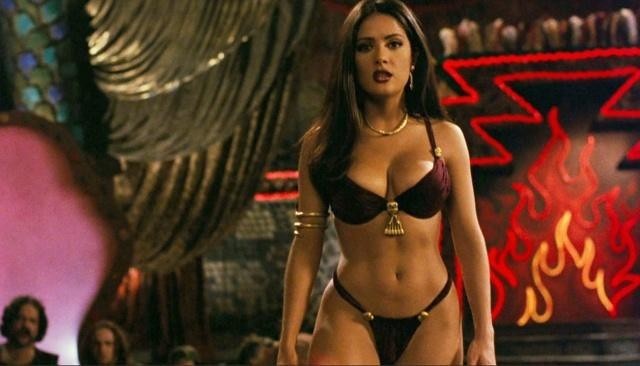As we prepare for the release of The Baby in the Basket, Tom Jolliffe presents essential selection of gothic horror films guaranteed to scare you senseless…
Dark, macabre psychological stories set in isolated locations with the uncanny or supernatural. Gothic horror movies are often dripping in atmosphere, enveloping the audience in a deeply unsettling story.
Immersion is the name of the game and we’ve seen everything from vampire stories, ghost stories and folk tales brought to life on screen. Adaptations of Shelley, Stoker and Poe to name a few, have always been a good source of inspiration. But what are the all-time best Gothic horrors? Well, that would be too tough to call from such a wide selection of greats but here are ten essentials to get you started…
Dracula
We can’t dive into the world of gothic horror and not visit Hammer Horror. One of the most iconic stars of Hammer movies was the late Christopher Lee whose inimitable presence and frame seemed to leave him inescapably cast as the villain and whilst he’s proven a formidable foe to everyone from James Bond to Frodo and his chums, Lee is best known as one of literature and cinemas greatest antagonists…Dracula.
There have been so many incarnations but there’s just something about Terrence Fisher’s glorious technicolour film filled with those iconic Hammer horror tropes. You’ve got just the right balance of camp and melodrama, set within the gothic visuals. Lee is a commanding and intensely charismatic Dracula only matched by his fellow Hammer legend (and oft foe) Peter Cushing. This one, like so many technicolor movies, looks absolutely dazzling in high-def.
Bram Stoker’s Dracula
Sticking with ol’ Count Dracula, how about a grandiose, bombastic, overblown and frankly glorious modern classic from Francis Ford Coppola? Coming in 1992, someway past Coppola’s golden era as one of American cinema’s most essential new wave voices, Bram Stoker’s Dracula is the very definition of over-indulgence.
Not for the first time, Coppola indulges every whim that comes to his mind with this big-budget spectacular. The film is inconsistent and if Keanu Reeves feels undoubtedly miscast, there’s some debate around whether Winona Ryder is suitable as Mina. Despite this, Gary Oldman chews as much scenery as he does necks. When he’s given the freedom of irredeemable villainy to toy with as an actor, Oldman never fails to deliver. He’s the anchor within the exquisite visuals and music, that really holds our attention in place.
There’s just enough terribleness to provide comedy, but not enough to derail or detract from those moments where Coppola nails the landing. Yeah, it’s pretty glorious, though not as chilling as Lee or Lugosi.
Eyes Without a Face
The most interesting movie villains are those with a sympathetic air of tragedy. Many of these stem from the Frankenstein/Monster motif. The monster and creator are driven to horrific acts which stem from tragic events and desperation. There are definite Frankenstein-ian elements in Eyes Without a Face, one of the great French horror films.
A Doctor riddled with guilt after a car accident disfigured his once beautiful daughter, kidnaps young women and removes their faces to try to give his daughter a new face. This dark and gothic horror is unsettling with the victims brought to the isolated setting. George Franju’s unforgettable and chilling visuals have stood the test of time, as has the sensational performance from Edith Scob whose eyes, even when her face is hidden behind a creepily inexpressive white mask, tell us so much.
Sleepy Hollow
Does anyone love the gothic aesthetic as much as Tim Burton? No, I don’t think so. Occasionally his fixation on exaggerated visuals and overwrought style can overwhelm the films, but Sleepy Hollow is one of his best, shot with stark monochrome pallets and heavy noir shadows.
Sleepy Hollow, based on Washington Irving’s classic short horror story, sees Ichabod Crane (Johnny Depp) sent to investigate a series of murders apparently by the hand of some supernatural creature. As a man of science, Crane is there to dispel myths and find the very real and living murderer, but his realist beliefs are pushed to their limits. It’s got all the grand spectacle of Burton at his best, with Danny Elfman complimenting those visuals as well as you would expect given the symbiosis between those two. Burton tips his cap to German expressionism, Japanese horror and Hammer horror amongst other inspirations.
The Cabinet of Dr. Caligari
Speaking of German expressionism, the silent era of cinema, particularly in Europe, was filled with legendary gothic horrors. Robert Wiene’s The Cabinet of Dr. Caligari is a landmark in cinema. A hypnotist uses a somnambulist to commit murders.
The beauty of the most effective films of the silent era is how they were able to tell engaging and clear stories almost entirely without words. Wiene was a forerunner in redefining production design and lighting. Those dazzling expressionist sets are filled with sharp angles and imposing shapes. Tim Burton has regularly referenced them in his own works. At the core of Caligari is a disturbing tale with the hypnotism feeling almost chillingly feasible. It’s a notion used many years later in Kiyoshi Kurosawa’s grim (but skin-crawling) serial killer horror, Cure.
The Lighthouse
Robert Eggers had delved into a gothic folk tale with The Witch, which was unsettling and enthralling in equal measure. His follow-up still remains his best work, The Lighthouse.
Take Robert Pattinson, firmly in the midst of his Pattinsonaissance and pair him with one of the all-time great character actors, Willem Dafoe. Stick them in an isolated lighthouse setting, shoot the film in black and white on old film stock and condense the frame to a claustrophobic 1.19:1 aspect ratio and you’ve got yourself a sure-fire winner.
The film has darkly macabre humour, and bristling ambiguity and throws two polar characters into inescapable cabin fever. Tensions boil and folklore melds with isolation to tear their reality perception to pieces. Pattinson is great but Willem Dafoe gives a performance for the ages.
Suspiria
Dario Argento’s iconic horror blends an isolated setting with the uncanny, witchcraft and bleeding technicolour-inspired visuals. Then for good measure, he tosses a prog-rock Goblin soundtrack atop it. The results are eye-burstingly good of course with so many colour themes running through the film. Suspiria feels unlike anything else in that regard and though many have worn their Suspiria love on their sleeve since no one has been close to matching this dynamic Grimm-esque fairy tale for its style and delivery.
Jessica Harper is a young American student sent to Berlin to be part of a prestigious dance school. Argento’s best films have often featured a fish-out-of-water protagonist thrown into a murder mystery. Cue dazzling death scenes with garish colour and loads of Argento’s inimitable style.
Black Sunday
We’ve visited Argento, how about the man who paved the Giallo pathway for Dario? Yes, Mario Bava, one of Italian Cinema’s greatest trailblazers made a classic horror replete with ancient curses, vengeful spirits and isolated locations and gothic visuals. A witch is burned at the stake, only to rise 300 years later to take her revenge on her descendants and possess the body of her lookalike.
Barbara Steele like so many English and American actors would become a legendary figure in Italian cinema even if she found the experience of making the film difficult. Though Bava would later become renowned for the vibrant colours that permeated his films, he’s no less effective a visual storyteller in black and white.
Black Narcissus
This Powell and Pressburger masterpiece is a psychological melodrama that fuses with escalating horror. A group of nuns take a post in a remote Himalayan monastery and find the cultural clashes and isolation difficult to contend with. There’s some deep-rooted sexual tension and two Sisters (Ruth and Clodagh) come bearing their own repressed issues that slowly come to the fore.
Though the performances lean to a more overwrought style of melodrama usually associated with the era (and particularly with Powell and Pressburger) there’s a slow transition to more understated and ambiguous stoicism with characters holding in their angst. The film, particularly for an era firmly within the production code years, takes a surprisingly dark turn in significant moments of the film and especially the final act. Visually resplendent, enthralling and occasionally disturbing.
The Pit and the Pendulum
We’ve had Barbara Steele already but we’ve not had Vincent Price and no Gothic horror would be complete without the great one. Roger Corman is synonymous with B pictures and become almost more known for his progression into becoming a prolific producer as much as his own legacy as a director. However, in his early days in the independent realm, Corman made some great horror films and none more so than his adaptation of Edgar Allen Poe’s The Pit and the Pendulum.
Poe’s stories are so ripe for cinematic plucking that it’s strange that there aren’t so many adaptations considered genre classics. The Pit and the Pendulum stays true enough to the source to satisfy Poe aficionados, has enough colour and distinct visuals to lure the eye and Vincent Price and Barbara Steele on top of their game. Corman in fact, is probably the foremost cinematic voice in bringing Poe to screen and the one who has been most effective at capturing the ambience and uncanny of the stories.
What’s your favourite gothic horror film? Let us know on our social channels @FlickeringMyth and be sure to watch out for our very own gothic horror movie The Baby in the Basket, releasing in the US and the UK on February 17th 2025…






















